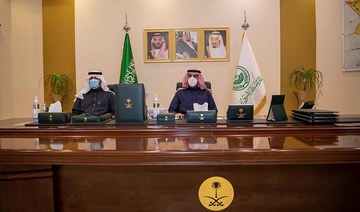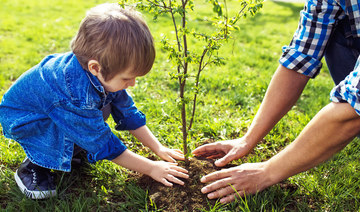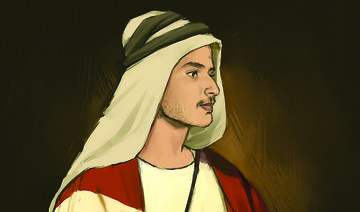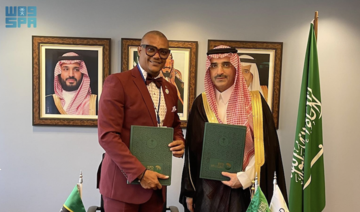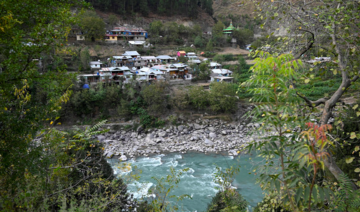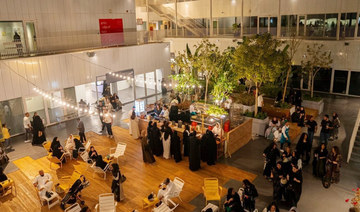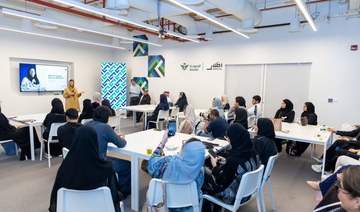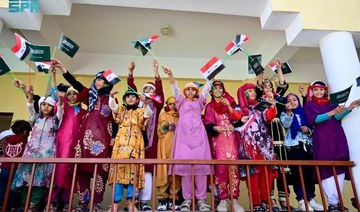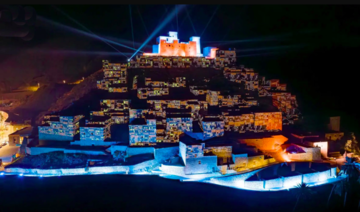Saudi Arabia’s newly established environment fund and environment centers were inaugurated on Thursday as part of the country’s sustainability strategy and efforts to ensure the protection of its environment and ecosystems.
The fund and five centers were inaugurated by Abdulrahman Al-Fadley, who is the minister of environment, water and agriculture.
“Establishing an environment fund aims at contributing to the financial sustainability of the environment sector and providing the necessary capabilities for its advancement, by contributing to supporting the operational budgets of environmental centers, supporting environmental programs, studies and initiatives, stimulating environmentally friendly technologies and improving environmental performance and environmental rehabilitation programs,” the minister said.
The National Center for the Development of Vegetation Cover and Combating Desertification aims to develop and manage national parks, develop and rehabilitate vegetation cover in forests, protect local endangered plant species, combat desertification, in addition to conducting studies and supporting research related to vegetation.
The National Center for Environmental Compliance is concerned with monitoring the environmental compliance of all establishments that have an impact on the environment in all development sectors, supervising programs for monitoring sources of environmental pollution in addition to approving environmental impact studies, issuing environmental licenses for all development projects, and inspecting installations.
The ministry said the tasks of the National Center for Wildlife Development included supervising programs related to the protection and development of wildlife and biological diversity, as well as planning and managing protected areas and managing centers for the breeding and resettlement of endangered animals.
The National Center for Meteorology will monitor weather and climate conditions, prepare forecasts, provide airports, ports and other bodies with data and weather forecasts, and operate weather monitoring stations in the Kingdom’s regions.
The National Center for Waste Management will organize the waste management sector to improve the quality of services, enhance the level of capabilities and competencies, enhance the economic sustainability of the sector by stimulating investment and maximizing the participation of the private sector, reduce waste disposal in landfills by stimulating the use of best practices in resource recovery techniques.
Environment fund, centers inaugurated in Saudi Arabia
https://arab.news/v9jq6
Environment fund, centers inaugurated in Saudi Arabia
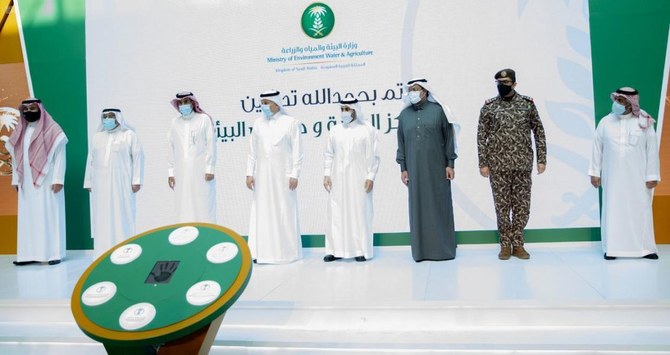
- Ministry aims to contribute to the financial sustainability, protect ecosystems
Art is ‘translating feelings,’ says 16-year-old Saudi artist
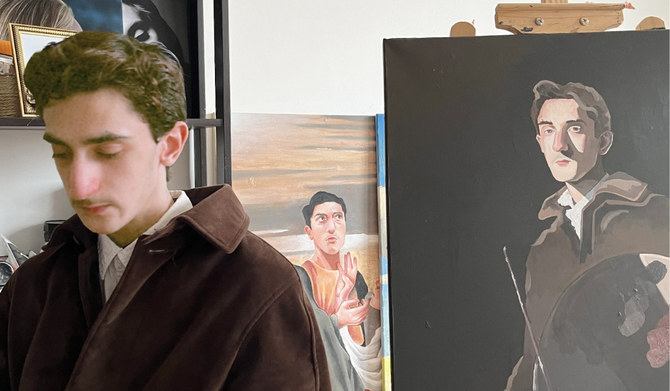
- Jawad Al-Omair has established himself as a painter, drawing inspiration from the beauty and pain surrounding him
RIYADH: While his classmates took part in sports activities, Saudi teenage artist Jawad Al-Omair daydreamed about the next time he would pick up a paintbrush or pencil to draw again.
At only 16 years of age, Al-Omair has established himself as an artist, drawing inspiration from the beauty and pain surrounding him.
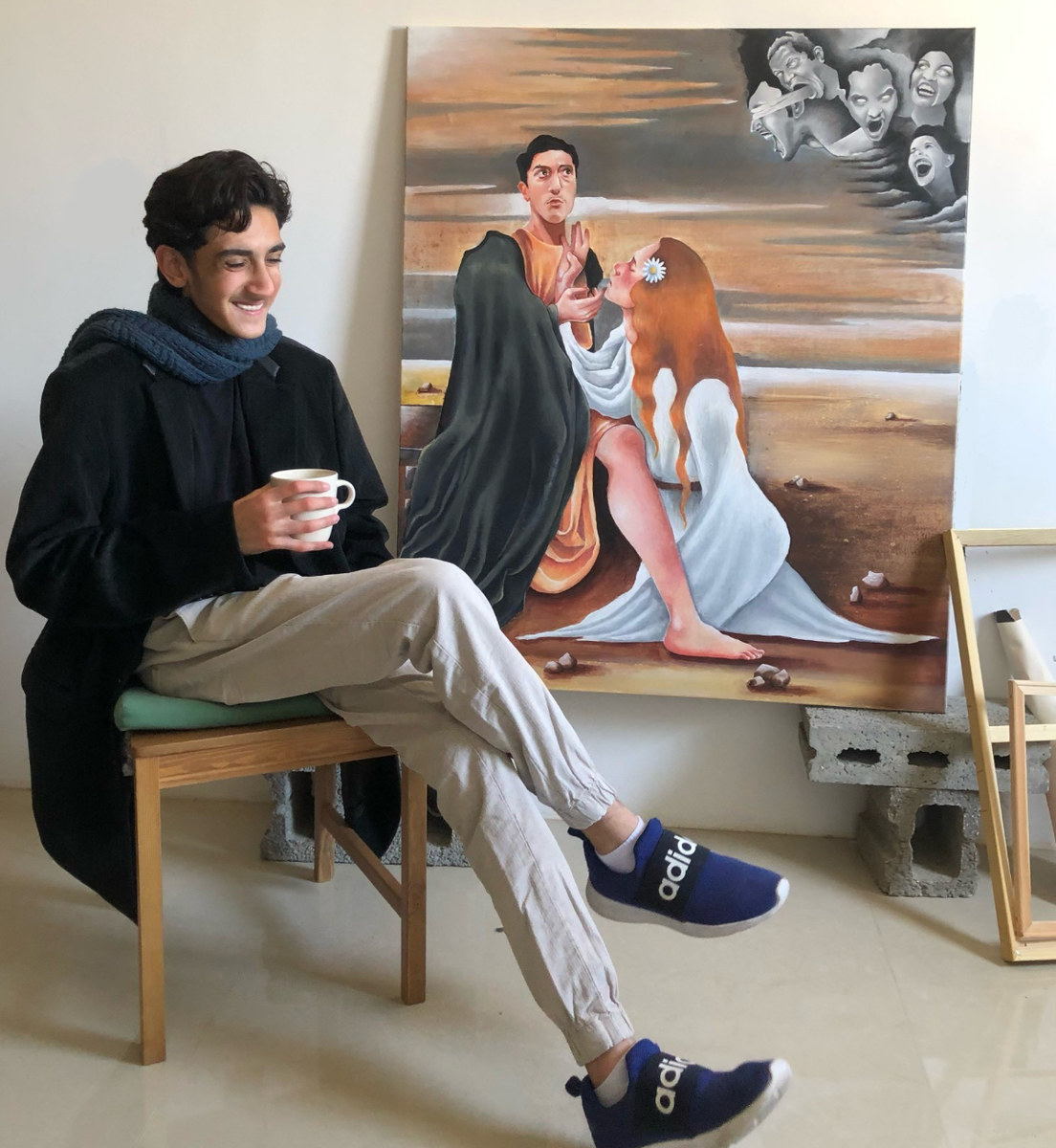
He told Arab News that his breakthrough moment came when he discovered his artistic abilities in the third grade.
“All the kids used to go to play. I always found myself opening my notebook and just drawing. I remember one day, I drew something at school, and when I got home, I showed it to everyone. I told myself, ‘I should do this more often.’”
HIGHLIGHT
Jawad Al-Omair views color as an arsenal to communicate emotion in his artworks.
He uses acrylic paint to portray his vivid ideas on canvas.
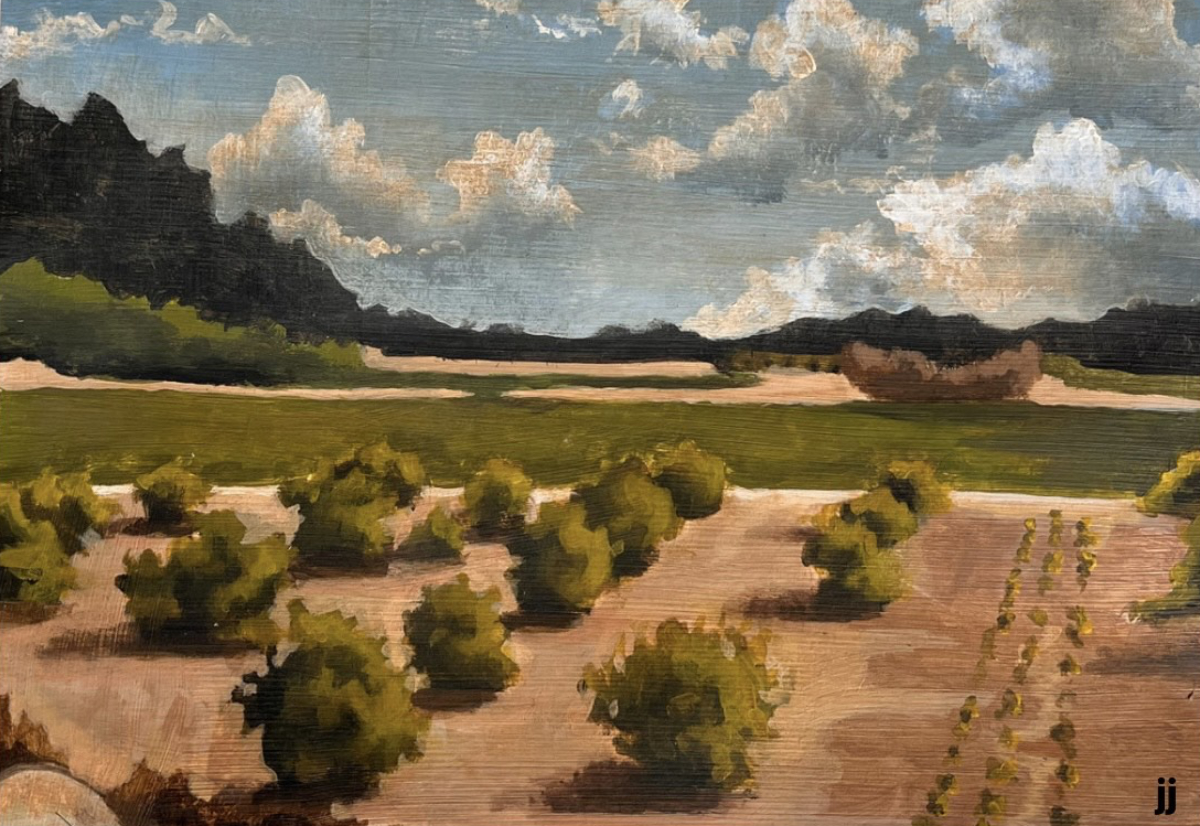
“With every painting I do, I usually have a vision of what the color palette is going to be and the composition, and most importantly what message and feeling I am trying to deliver through the painting.”
The young artist views color as an arsenal to communicate emotion in his artworks. “If I wanted to paint something that conveys the feeling of being lost, I would usually use cool toned colors like greys and blues.”
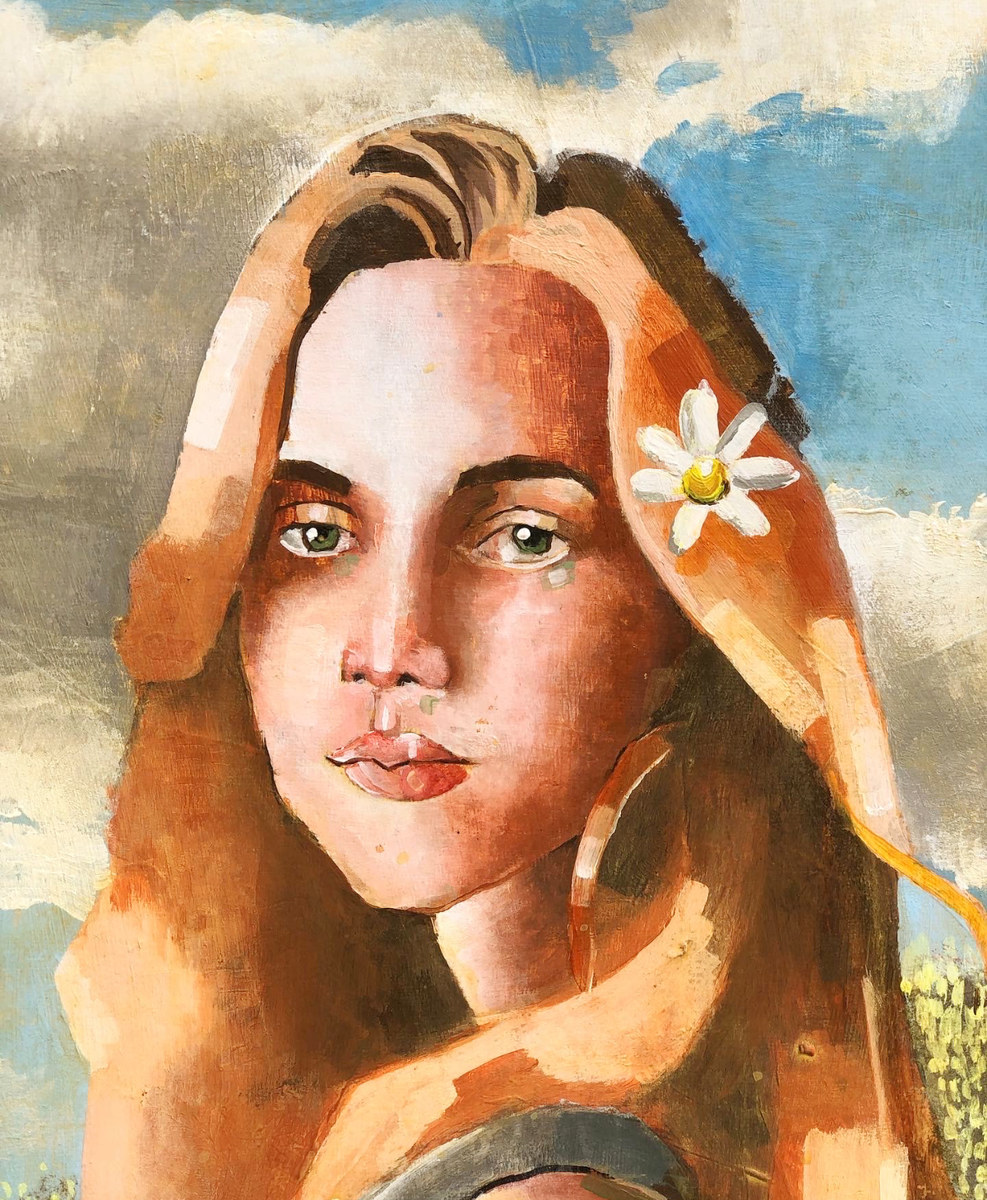
Al-Omair said that he noticed a dramatic change in his artistic abilities after being introduced to a group of local artists who taught him painting techniques to implement in his artworks.
“Dana Almasoud is one of my best friends who has helped me so much. Three years ago, I used to be a completely different artist. I used to be unable to draw small portraits, but she taught me how to. I can’t picture how my life would be if I had not met them,” he said.
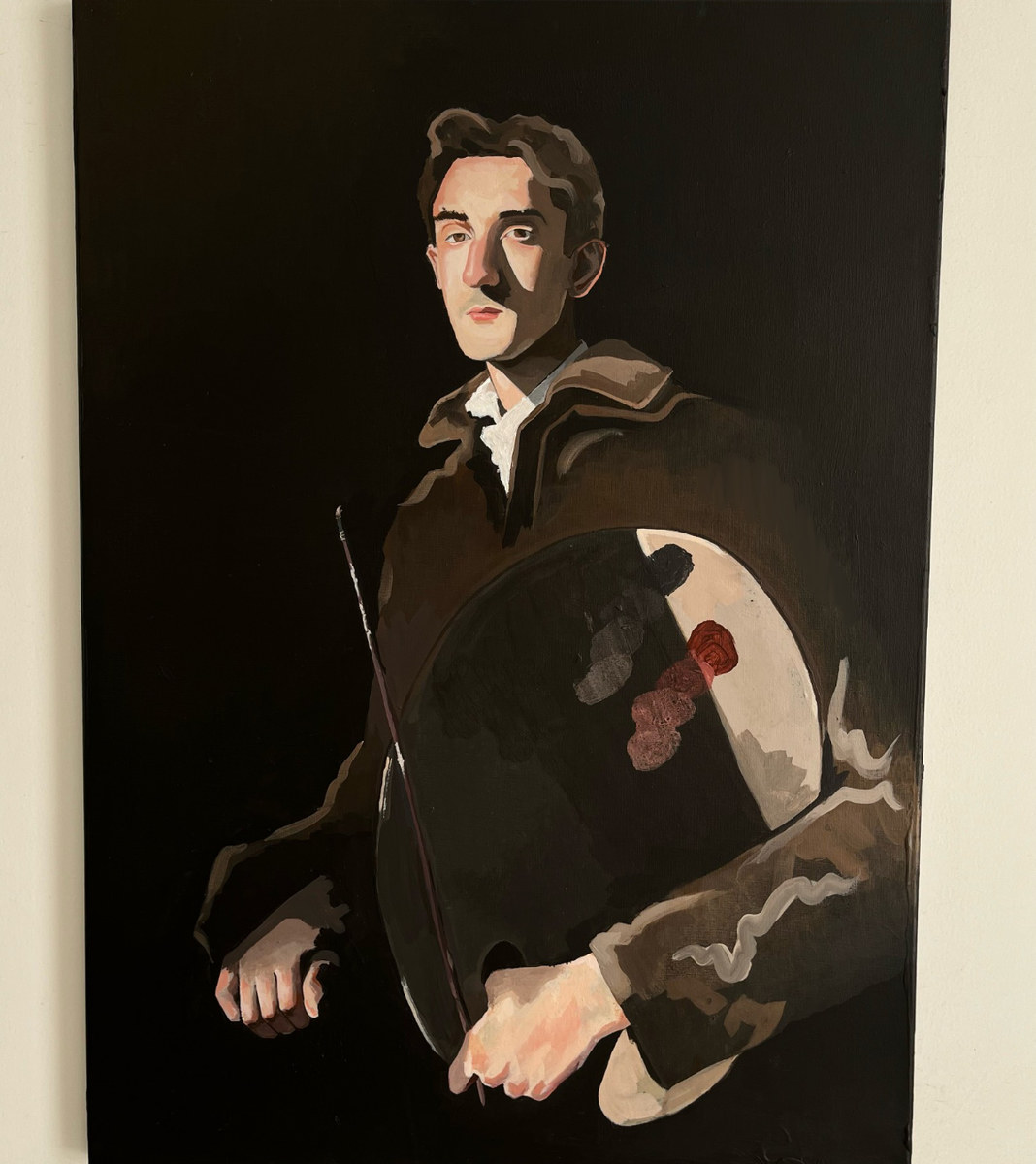
In a recent artwork, Al-Omair painted a large-scale self-portrait inspired by the style of John Singer Sargent, an American artist renowned for his portrait paintings in the late 19th and early 20th centuries.
He described Sargent as one of his favorite artists. “If you see his self-portrait, It is similar to mine. I was looking at his artwork while I was painting so I could capture that same vibe.”
It took Al-Omair about 12 hours to complete the self-portrait, which emphasizes his prominent features.
“I get commented on my nose a lot, so I painted it in the center. I wanted to immortalize my 16-year-old self, because who knows what I will look like five years from now?”
The young artist aims to turn all sorts of experiences — even those of friends or family members — into art.
“How would life be if we did not have music or anything beautiful to look at? When you think of an artist, people usually imagine someone with a brush, but it is much bigger than that.
“Art is translating feelings with a certain skill. Movies taught humanity so much because you get to learn about people. Writing, songs and music are emotional things that we share. Art is one of the most important parts of life. Everyone has an artistic side to them that they may have not found yet,” he said.
Saudi development fund agrees $50m loan deal with St. Vincent and the Grenadines
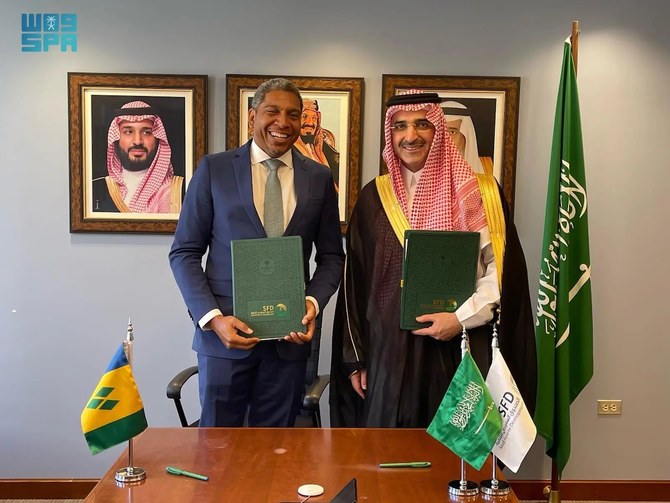
- Funding will help rebuild and repair facilities damaged by natural disasters in the Caribbean island nation
RIYADH: The Saudi Fund for Development signed a $50 million loan agreement with St. Vincent and the Grenadines on Friday to assist communities affected by natural disasters, Saudi Press Agency reported.
The deal was signed by SFD CEO Sultan Abdulrahman Al-Marshad and Camillo Gonsalves, finance minister of St. Vincent and the Grenadines, during the 2024 spring meetings of the World Bank and the International Monetary Fund in Washington.
According to the World Bank, the southern Caribbean nation faces a host of natural threats, including floods, hurricanes, droughts, landslides, and volcanic eruptions.
The agreement will fund a project to rebuild and repair buildings and facilities damaged by natural disasters in the island nation.
This initiative includes the restoration and construction of essential infrastructure, such as housing, healthcare, educational, and sports facilities, aimed at boosting their durability and resilience against future disasters and climate change impacts.
The project will also include establishing four healthcare centers, building primary and secondary schools, renovating government buildings, and restoring homes damaged by volcanic activity.
The loan is in line with the SFD’s commitment to supporting vulnerable communities around the globe.
Since its inception in 1975, the Saudi fund has financed over 800 development projects and programs worldwide, with total funding exceeding $20 billion.
Art Jameel announces open call for Hayy Jameel Facade Commission

- Antonia Carver, director of Art Jameel, said: “At Art Jameel, we are committed to fostering the role of the arts in public life
JEDDAH: The Hayy Jameel Facade Commission is inviting new and established artists in Saudi Arabia to reimagine the facade of the Hayy Jameel art building in Jeddah.
In its fourth year and third open call process, the commission will select a winning artwork that serves as conversation starter between the complex, the community it serves and the broader public.
Antonia Carver, director of Art Jameel, said: “At Art Jameel, we are committed to fostering the role of the arts in public life.
“Through this annual commission which positions the facade as the first point of contact with the Hayy Jameel community, we are providing a platform that propels mid-career artists forward and challenges them to produce a large-scale, highly imaginative work that remains in-situ, front and center in Jeddah, for around 10 months.”
The commission encourages artists to consider the site-specific nature of the project and the technical requirements of a public work.
Sustainability considerations are also appreciated in managing the carbon footprint of the artwork and its installation.
Eligibility is open to all Saudi and Saudi-based artists and collectives, with at least one member required to be a Saudi citizen or resident if applying as a collective.
The commissioned artists will receive a work fee and a production budget managed by Art Jameel.
The jury, consisting of local and international art professionals, curators, artists and museum directors, will select a single work for production.
Applicants are required to submit a concept statement (200-500 words), up to four sketches and diagrams, and an estimated production schedule through the application portal.
The deadline for the facade submission has been extended to May 1, with the launch scheduled for October. Following the unveiling, there will be a public viewing period from October 2024 to September 2025.
Previous works displayed on the building have showcased the talent of artists such as Nasser Al-Mulhim, Tamara Kalo, Mohammad Al-Faraj and Dr. Zahrah Al-Ghamdi.
Saudi universities participate in Geneva’s International Exhibition of Inventions
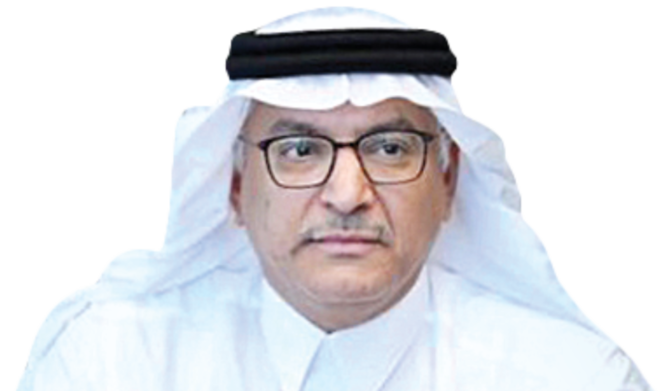
- More than 1,000 inventions from over 40 countries showcased at event
RIYADH: Mohammed Al-Sudairi, the Saudi deputy minister of education for universities, research and innovation, opened the Kingdom’s pavilion at the 49th Geneva International Exhibition of Inventions.
Some 26 Saudi Arabian universities are taking part at the event — including 19 government universities, two independents and five private bodies — and a total of 113 inventions have been produced, in scientific, theoretical, medical, and biological specializations, the Saudi Press Agency reported.
Among the universities taking part is Qassim University, which is showcasing a display that highlights innovations and several inventions.
Abdulaziz bin Bani Alharbi, a faculty member at Qassim’s College of Agriculture and Food, said that the college was showcasing a patent registered with the Saudi Authority for Intellectual Property: a method for desalinating salt water using a halophyte plant.
He said the invention involved introducing water and placing the plant in a closed system that allowed the collection of water from the plant after the transpiration process.
Alharbi added that gas exchange followed and then desalination to obtain salt-free water.
Fahad Alminderej, a faculty member at the College of Science, said his group had obtained a patent for extracting materials from date waste, and was then using them in pharmaceutical manufacturing in an innovative manner. This patent had also been registered with the Saudi Authority for Intellectual Property.
Abdullah Almohaimeed, the head of the Innovation Center and Intellectual Property at the university, said that Qassim was participating in the exhibition as part of the Ministry of Education’s initiative to enhance the international presence of Saudi universities, in line with national objectives.
He added that the university’s participation aimed to highlight its role in supporting the innovation system and entrepreneurship, as well as showcase many inventions.
The exhibition, which is taking place until April 21, is displaying more than 1,000 inventions from over 40 countries. Some 800 exhibitors are featured at the event and 30,000 visitors are expected to attend, in addition to 650 journalists.
It is the world’s largest annual event devoted exclusively to invention.
Al-Baha’s monuments: A pivotal testament to civilizational advancement
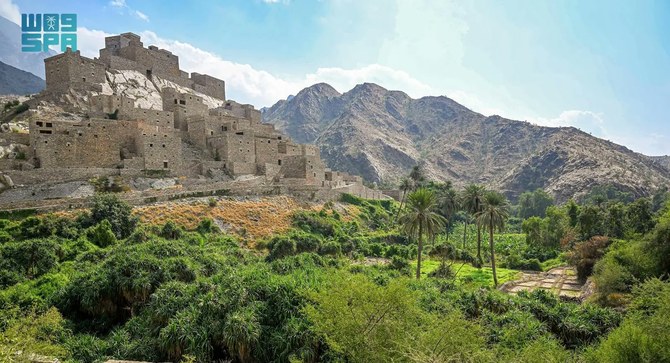
- Characterized by intricate designs, the residential buildings, castles, and forts embody a harmonious fusion of environmental adaptability and cultural resonance
RIYADH: Nestled in Al-Baha region in southwestern Saudi Arabia lies a treasure trove of ancient architecture in the quaint villages that dot its landscape.
Characterized by intricate designs, the residential buildings, castles, and forts embody a harmonious fusion of environmental adaptability and cultural resonance.
Crafted with precision, these structures seamlessly integrate with the rugged terrain and fluctuating climate, while also paying homage to the long-standing customs and traditions of ancient Arab society.
Seventy-three-year-old Mohammed bin Salem Al-Ghamdi told Saudi Press Agency: “For decades, I have dedicated myself to the craft of stone house construction.”
Currently, he and his companions are diligently crafting a stone room, employing stones as their primary building material. Together, as a cohesive team of builders, craftsmen, and eager participants, they collaborate harmoniously to bring their vision to life. He described it as both a hobby and inheritance passed down through generations.
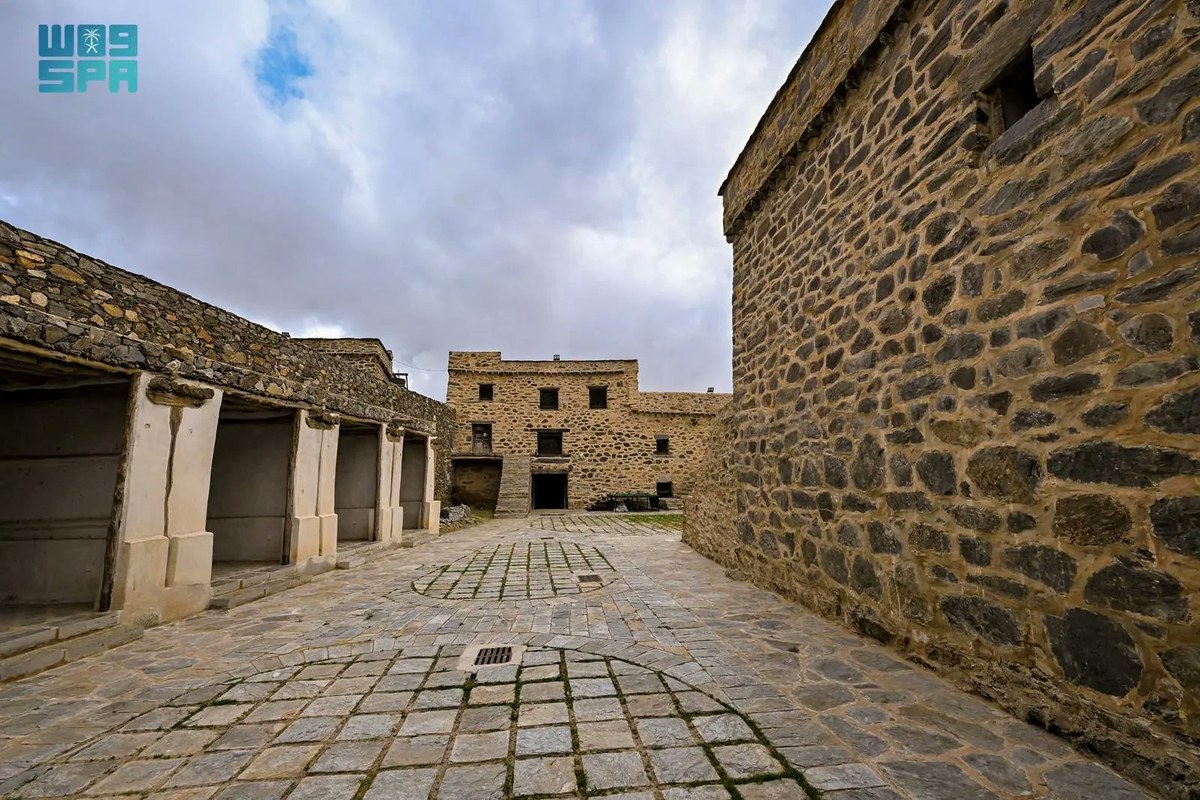
“In every construction endeavor, we rely on what’s known as the cornerstone, strategically positioned at the room’s corners. Additionally, a lengthy stone, referred to as the ‘link,’ is essential for connecting each stone within the structure. We also use sturdy stones known as ‘Al-Mateen’ or ‘Al-Daher’ to fortify the room’s foundation.
“Moreover, we meticulously place ‘Al-Lazza’ stones, tiny yet significant, within the larger stones, ensuring a seamless fit without any gaps or openings in the room’s structure,” he added.
“Once the corners are meticulously stacked and leveled, I proceed to roof the room with wood. This involves utilizing a series of wooden beams cut to specific lengths to interconnect all corners of the room. Next, I scatter small plants across the wooden framework to fully cover the ceiling, upon which clay is applied to secure the structure. This method ensures durability against erosion and rainfall, further reinforced by specific paving techniques.”
Al-Ghamdi emphasized the importance of post-construction plastering with clay, which not only gives the interior an earthy tone but also regulates the temperature — ensuring warmth in winter and coolness in summer.
He mentioned the practical use of juniper trees for doors and windows, facilitating easy replacement and serving a dual purpose in construction.
Dr. Abdulaziz bin Ahmed Hanash, professor of urban design at Al-Baha University, highlighted the profound significance of human construction in Al-Baha region, portraying it as a living chronicle of urban civilization’s evolution over time.
He underscored the traditional architecture and urban legacy of Al-Baha as foundational elements, inherently distinguishing the region. With its wealth of historical landmarks spanning the Sarat and Tihamah regions, the area has gained the attention of state authorities, who aim to nurture its potential as both a summer and winter tourism hotspot through strategic development initiatives.



